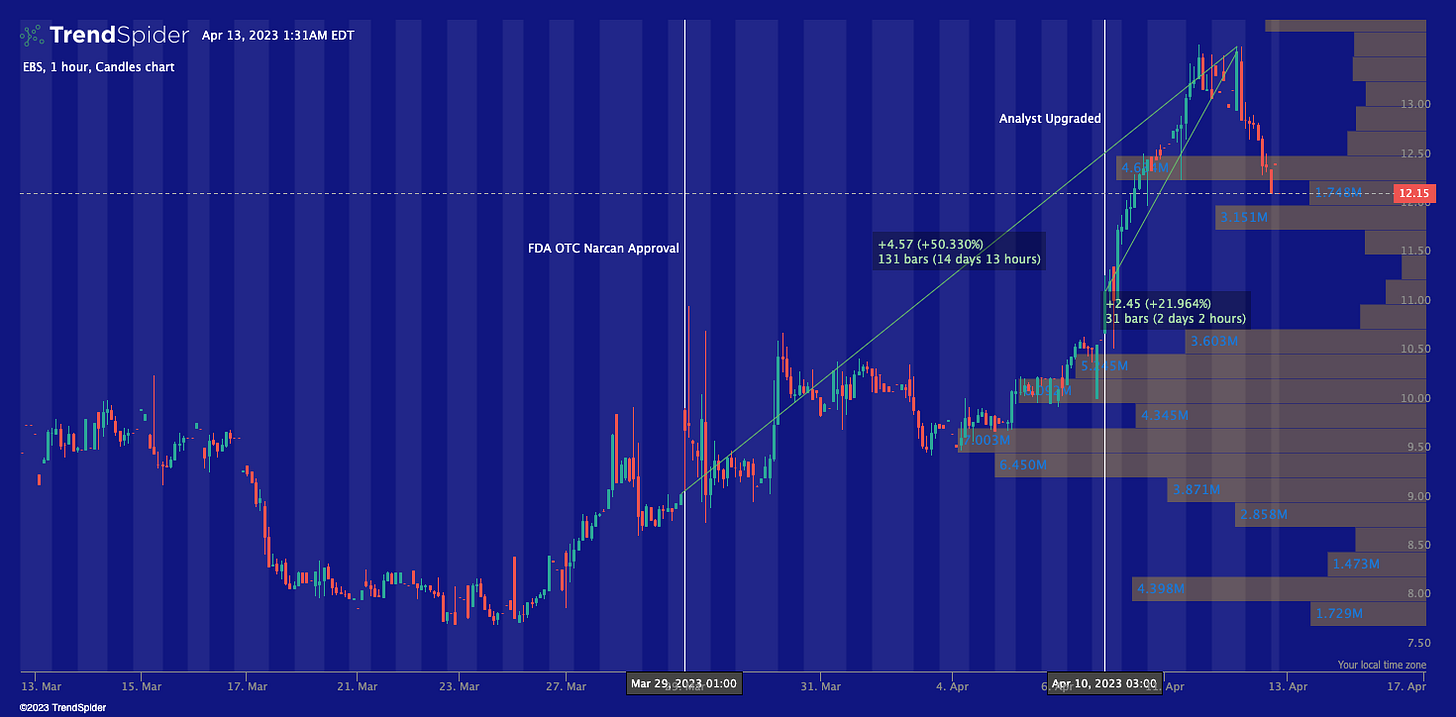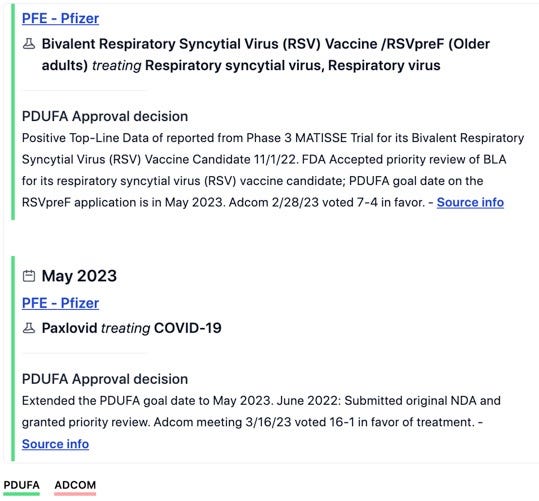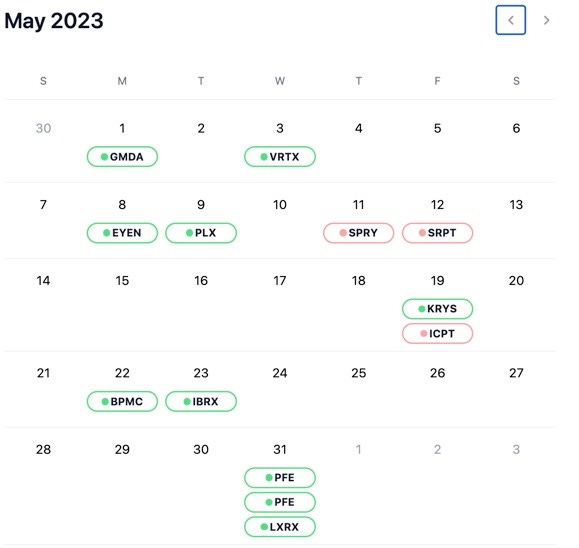In this article we plan on trying something new. Let us know if you found this helpful or informative.
Introduction:
A brief introduction to the biotech industry. Biotech companies start like most other companies, as a small operation with a few employees and little to no revenue for many years. This problem is only exacerbated by the fact biotech companies are extremely expensive to run. It is extremely costly to develop a new drug and bring it to market it in the United States. These companies mostly operate in the healthcare sector and can range from large, well-established pharmaceutical companies to small, early-stage biotech startups. This piece will mostly focus on the small and early stage biotech companies.
Biotech stocks are often driven by catalyst events, such as FDA approvals, PDUFA approvals, and clinical trial results. These events can have a significant impact on the stock price of a biotech company, as they can signal the potential for significant revenue growth and market share expansion. This fact excites traders and investors alike who often line up to buy shares in a biotech company that had a positive catalyst. For a recent example we will examine Emergent BioSolutions Inc. (EBS), first note the volatility of the stock, especially after hours. (Figure 1) This volatility can be used in a traders favor if said traders understand the complexities of biotech stocks. It can be a curse for the less experienced traders. Now we would like to point out the 50% gains in the two weeks following EBS getting a FDA approval. (measured from high the day before the FDA announcement to the highest high at the time of writing on April 13th) Also notice 21% of these gains happened in just two days after an upgrade by an analyst. (Figure 1) In our view this is a great example of the importance of taking profits along the way & not trying to time the top of the stock exactly. It also highlights the importance of conviction when trading biotech companies.
Upcoming Catalyst:
PFE-Two PDUFA reviews in May. With both passing their ADCOM vote. (Figure 2) This is a company we at Celeritas Capital really believe in, out of the May catalyst we believe this to be the most promising. Along with being the safest.
Below is the upcoming biotech catalysts expected in May 2023. (Figure 3) It is important to note that occasionally these dates get pushed back for a various number of reasons. As such the best way to keep up with a company’s upcoming catalysts is by monitoring the corporate website, specifically under the investor relations section. Also another important note about Figure 3, the companies with green names have a PDUFA review and the red names have an ADCOM meeting.
How to Trade Biotech Catalysts:
There are numerous ways to trade these biotech catalysts, like every other event but we will examine two common ways to trade biotech companies. The first way we will take a look at is buying shares a few months to weeks before an expected data release. As the date of the catalyst nears the theory is the price of the shares will rise in the lead up to the data release. A trader who is using this strategy can sell shares along the way taking profit or they can wait until the last day before the data release. Below is an example of what this trade might look like, in Figure 4 is GMDA a biotech company. The FDA recently approved their treatment for a type of blood cancer, in this example a trader who sells their shares the day before the data release netted a 31.4% profit. (Figure 4, describing the yellow dotted line & orange text) The second way to trade biotech catalysts is similar to the first but with one key difference, holding through the announcement. An example of a this trade is also highlighted in Figure 4 by the green text which shows a trader following this strategy of buying and holding through the data release could have netted a 137% profit.
However, we believe Figure 5 shows a better example of the second strategy. Below is a chart for the biotech company SANA. (Figure 5) In it we have a possible best case & a base case for a hypothetical trader. (Figure 5) In the best case the trader would have netted a 72.6% profit the reason this is labeled as the best case is this trader would have bought at local low and sold at the highest price. (Figure 5, describing the green text) Of course doing this in a real trade is much harder than drawing it on a chart as such it is labeled the best case. Now in a more realistic scenario what we call the base case as illustrated by the yellow line with an arrow and the orange text in Figure 5. In the base case example for the second trading strategy the hypothetical trader would still have netted a 45.1% profit. (Figure 5) The reason this is our base case is because this trader bought at a slightly higher price and sold at a more reasonable target.
In closing this is a very simple overview about trading biotech catalysts. There is many different and great ways to capitalize off biotech catalysts we did not mention in this article. If there is any interest in more pieces like this let us know in the comments! As always we welcome any feedback positive or negative in the comments.
DISCLAIMER: We are not Financial Advisors, and all information presented is for educational purposes ONLY. Financial markets can be extremely volatile, as such using good risk management is a must.








